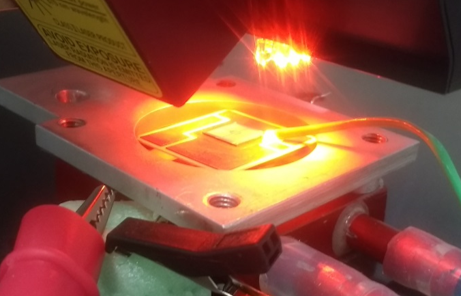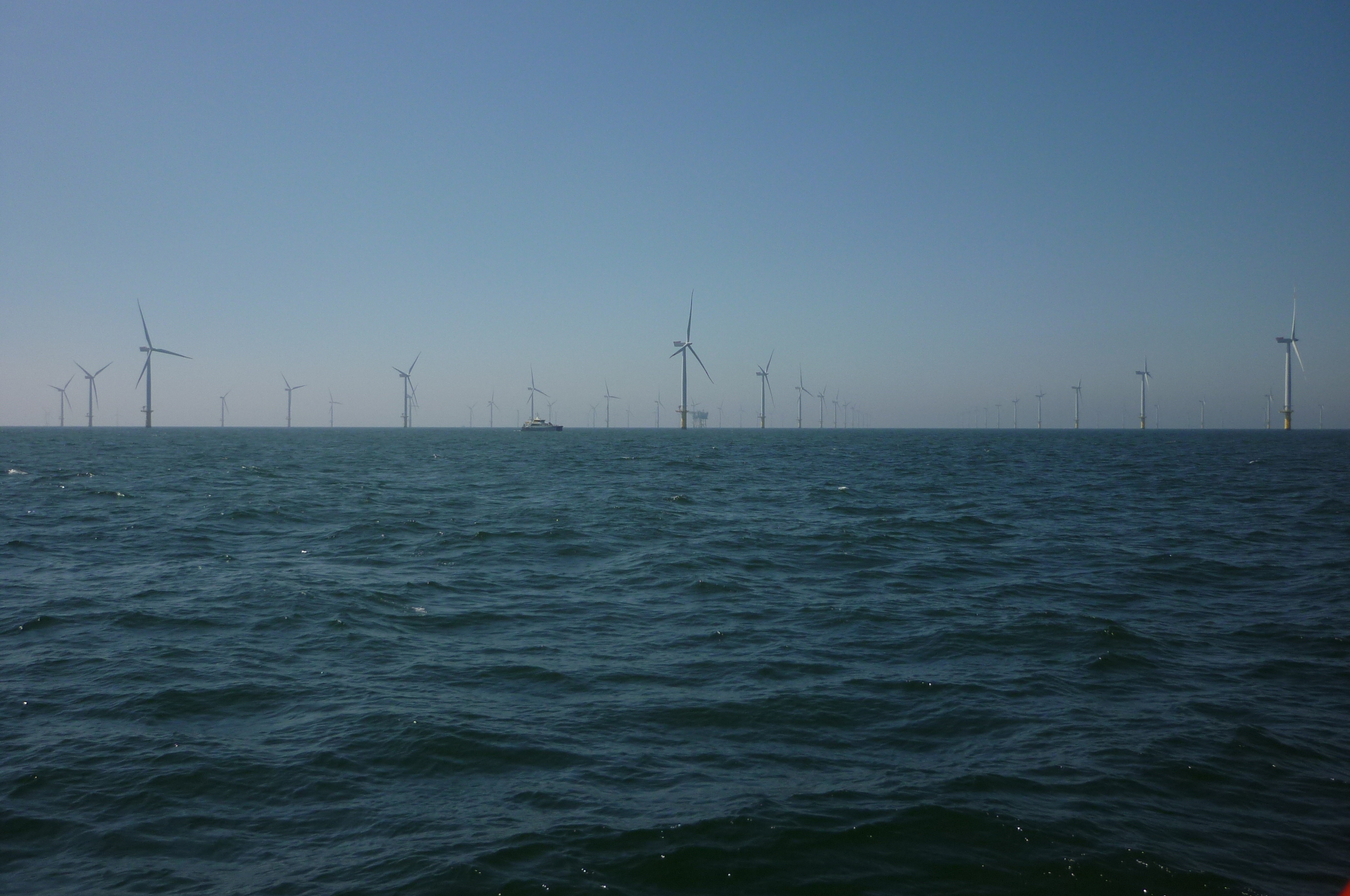Improved power electronic components for energy generation in offshore wind parks
Power electronics in wind turbines ensure that the fluctuating energy generated is fed evenly into the grid. The materials and components used in this process are exposed to extreme stress. Together with partners, the Fraunhofer Institute for Microstructure of Materials and Systems IMWS has now developed an approach for significantly more robust solutions. The new components from the chip to the system level, tested on a megawatt test bench, reduce switching losses, improve power density and reliability, and enable a 50 percent increase in life time.


More than a quarter of the electricity generated in Germany now comes from wind power, making it the country's most important source of electricity. A significant proportion of this is generated offshore. To make the wind turbines used in this process even more efficient and robust, Infineon Technologies AG, SEMIKRON Elektronik GmbH & Co. KG, Freqcon GmbH, nanoAnalytics GmbH and the Fraunhofer IMWS have significantly improved the power electronics components used in offshore wind turbines in a joint research project.
Power electronics has a central task in wind turbines: The stronger the wind blows, the higher the rotor speeds and the voltage generated in the generator. Power semiconductors compensate for these fluctuations and ensure that energy is transmitted evenly to the power grid. During these switching processes, there is a loss of electrical energy through conversion to heat, so some of the wind power generated does not reach the grid at all. In addition, the components used are extremely stressed by external temperature changes as well as humidity, salt, high voltages and mechanical forces, which limits their reliability and life time. Defects in power modules are therefore frequently involved in wind turbine failures, resulting in corresponding yield losses and maintenance costs.
The project, launched in 2017 and funded by the German Federal Ministry for Economic Affairs and Energy, has therefore focused on improving components and semiconductor structures of power electronics. "This approach enables optimizations in a wide range of areas, such as energy efficiency by reducing switching losses while increasing power density and reliability. The solutions developed are better suited to ensure grid stability and increase the resistance of the systems to environmental influences such as humidity and salt. The life time of the components can thus be increased from 20 to 30 years, which significantly reduces the costs of the overall system," says Bianca Böttge, who was responsible for the project at the Fraunhofer IMWS.
The research institute in Halle (Saale) contributed in particular its expertise in materials characterization and developed improved methods for materials testing of packaging technology, both for the semiconductor components used, such as transistors and diodes, and for different contacting concepts of the semiconductor chips. "Various contact material systems, contacting technologies and packaging concepts were used in the project. We have further developed diagnostic procedures and analysis methods for this in order to evaluate the reliability and material properties of the components developed in the project and the power modules based on them, and to identify defect mechanisms and failure risks very early on. Only in this way can the components withstand the stresses of use in wind turbines over the longest possible periods of time, during which they must undergo hundreds of thousands of thermal and electrical cycles," says Böttge.
At the Fraunhofer IMWS, methods of high-resolution, nanoanalytical material characterization such as scanning electron microscopy (SEM) and transmission electron microscopy (TEM) were used. In addition, the applicability of new approaches of acoustic microscopy as a non-destructive alternative for corresponding questions was investigated. In this way, the project was able to gradually select materials and manufacturing processes for new contact systems as well as the power modules based on them, which do not involve microstructural defects such as voids, delaminations, diffusion mechanisms or cracks. At the same time, new preparation methods were developed for the morphological and chemical analysis of the interfacial processes in the bonded joints, and a defect catalog for the identified defect mechanisms was formulated together with the partners.
The partners' development work focused, for example, on the development of double-sided sintered systems instead of wire bond and solder connections in order to make higher chip temperatures possible, the improvement of module cooling in the system or the further development of corrosion-resistant chip edge terminations. "During development, we have developed an in-depth understanding of sintered power electronics systems based on the new contact materials systems, which is elementary for reducing defects and reliability risks," Böttge concludes. "Together with our partners, we have thus made a major contribution to improved reliability, service life and performance of power electronics in wind turbines and, at the same time, to even greater efficiency in the use of renewable energies."